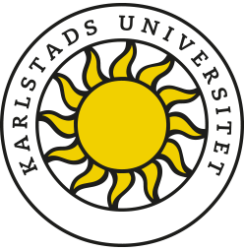Olcay Sert, Professor of English language education, Mälardalen University
“If I need to [manage long silences] a lot of times, maybe there’s something I’m doing wrong.” (A student-teacher in Sweden)
One of the most challenging moments for novice language teachers is to tackle problems in classroom interaction like very long silences during lessons (e.g., when teachers receive no answers after they ask questions). In my 2015 book, I argued that teachers may need to monitor learners’ silences, gaze behaviours (see Figures 1 and 2), and gestures while they are teaching. Research shows that becoming an expert teacher involves “learning to notice” (Sherin & van Es 2005) such interactional dynamics in classrooms. This can be done by reflecting on them using videos of your own lessons like the Swedish pre-service teacher in the opening quote of this text did. One might then ask: what aspects of classroom interaction can a teacher reflect on other than silences? And how?


The said pre-service teacher, and her peers, volunteered to be part of a project designed to encourage them to reflect and get feedback on classroom interaction in their lessons. The pre-service teachers were able to (re)view how they interacted with their learners during lessons and reflected on how this interaction may promote (or obstruct) learner engagement. They were able to use annotated videos of their lessons and get feedback from their mentors and peers. The screenshot from the digital tool we used (Figure 3) during this project provides an overview of different aspects of classroom interaction on which they focused.

Figure 3. A screenshot from the video observation tool with a focus on classroom interaction
The aspects of classroom interaction that teachers reflected on included (from top-left to bottom-left in Figure 3): Student initiation, e.g., when pupils ask questions; Classroom Management (with three sub-categories: managing long silences, unwillingness to participate, and disciplinary issues); L(x), i.e., how the teacher responds to learners’ use of Swedish, English, and other languages; and Multimodality, which includes the use of gestures, materials, and other visuals. Other aspects of classroom interaction that teachers reflected on included (from top-right to bottom-right in Figure 3): Teacher initiation (e.g., questions asked by teachers); teacher response (e.g., an elaboration question that follows a learner’s answer); and Evaluation (e.g., when a teacher praises a student by saying “very good” or evaluates a student negatively). In one of our case studies (Sert et al., forthcoming), we noticed that a pre-service teacher overuses “direct negative evaluation” (i.e., says “No” directly and frequently after an incorrect answer by learners). With the help of her mentors and after she (re)views her classroom videos, the pre-service teacher changes the way she responds to learners’ answers. Although these findings are interesting, we need to consider that classroom interaction is not just about teacher-led whole classroom activities.
A good language teaching curriculum needs to balance the classroom time spent on different communication modes to create more learning opportunities, which brings our discussion to the green buttons on figure 3 (bottom-left to right): Teacher monologue, Whole class interaction, Pair/group work, Individual student work. In designing language lessons, language teachers need to consider that each classroom communication mode generates different interaction and learning opportunities. For instance, based on our research in an English 7 course in a Swedish upper secondary school, we (Sert & Amri 2021) showed that learner-learner interactions during film-based discussion tasks promote language learning opportunities. This is because such group tasks push learners to co-narrate film scenes to each other and within the co-narrations pupils learn from each other. Teacher-led whole class interactions, on the other hand, may facilitate other language learning opportunities: for instance, teachers’ use of hand gestures for explaining words might create opportunities for vocabulary learning (see Sert 2017). What a teacher might want to consider is how much time is dedicated to each classroom communication mode and what kind of interaction opportunities each mode generates. In line with this idea, in a collaborative action research project (Sert & Jonsson, forthcoming), the teacher used visualized data analytics (see Figure 4) that depict how much time she dedicated to each classroom communication mode during a given lesson.

Figure 4. Classroom communication focus, adopted from Sert & Jonsson (forthcoming)
“I thought that I did more whole class activities than I actually do. I think that’s what I find the most surprising” (an experienced secondary school English language teacher in Sweden)
As is clear in the given quote from a reflection session, the teacher (re)considered the time she dedicated to whole-class interaction and started making informed decisions for future lessons. It is this kind of awareness that is at the heart of “Classroom Interactional Competence” (CIC, Walsh 2011). CIC is about the use of interaction in assisting language learning. It is about how teachers (and learners, together) create opportunities for language learning through questions, corrections, evaluations, gestures, and multilingual resources. Teachers can develop their classroom interactional competences by reflecting on their own classroom interactions together with other colleagues and/or mentors. Research has shown that the interactional moves are central in creating opportunities for learner engagement and language learning. We therefore need to look in the mirror as teachers and watch our own lessons with a focus on how we interact with our students and how much space we provide for learners to develop their interactional competences. Collaboration between teachers in the same schools as well as university-school partnerships are central for developing a culture of reflective practice.
Interaction plays a unique role when it comes to language classrooms. It is not just the medium like it would be in a mathematics lesson, but it is also the “target” of learning as well as the “space” for learning. We learn in and through interaction, and that is why teachers and learners need to reflect on how they interact. This is a process of life-long learning and needs to be viewed from the perspective of continuous professional development. As an experienced Swedish teacher of English put it: “you need to be reminded about those small things that make differences”.
Olcay Sert, May 2023
References
Sert, O. (2015). Social interaction and L2 classroom discourse. Edinburgh University Press.
Sherin, M., & van Es, E. (2005). Using video to support teachers’ ability to notice classroom interactions. Journal of Technology and Teacher Education, 13(3), 475-491.
Sert, O. (2017). Creating Opportunities for L2 Learning in a Prediction Activity. System. 70, 14-25.
Sert, O. & Amri, M. (2021). Learning Potentials Afforded by a Film in Task-Based Language Classroom Interactions. The Modern Language Journal. 105 (S1), 126-141.
Sert, O., Gynne, A. and Larsson, M. (forthcoming). Developing Teachers’ Interactional Competence through Video-Enhanced Reflection: A Student-Teacher’s Use and Avoidance of Negative Evaluation.
Sert, O. & Jonsson, C. (forthcoming). Digital data-led reflections on language classroom interaction: A collaborative action research. In (Eds.) A. Burns & K. Dikilitaş, The Routledge Handbook of Language Teacher Action Research.
Walsh, S. (2011). Exploring classroom discourse. Routledge.

